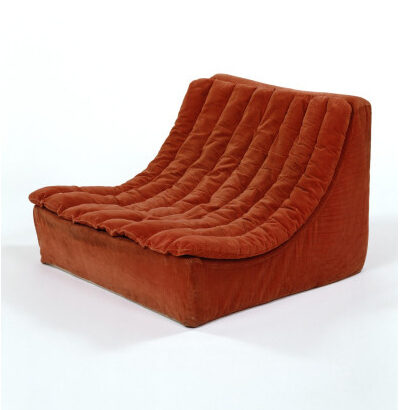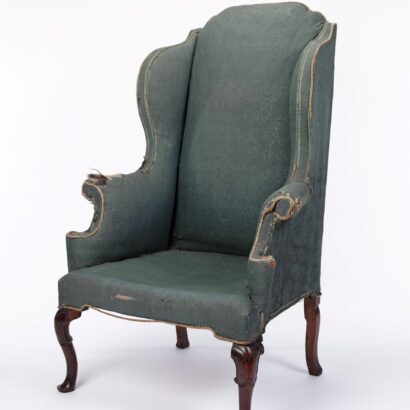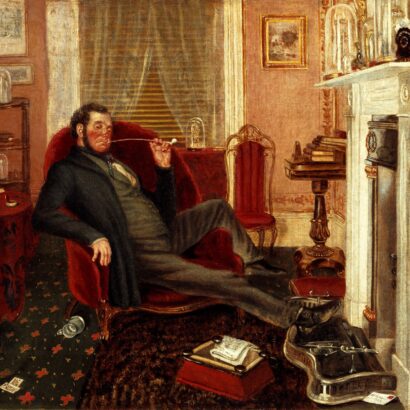Our idea of what is comfortable has changed through time, as society has. Technological advances, affordable furniture, domestic behaviours, heating and lighting have all impacted the comfort of our homes.
A cosy corner or a sofa to veg out on: how do you get comfy at home?
Objects to look out for

Scoop, by Terence Conran, for Habitat, 1974–1980
This chair was made from a solid block of upholstery foam that was scooped out to form a seat. The seat and cushion were then covered in a corduroy fabric called ‘Groovy’. It would have been almost impossible to sit up straight in this chair. Scoop’s form reflects the informal and relaxed style of furniture that we expect in today’s homes.
Scoop chair by Terence Conran for Habitat, 1974–1980, Object number 190/1998

Easy chair, 1720–1740
In the early 1700s, this easy chair would have been the height of comfort. Fully upholstered, its high back protected its sitter from cold draughts and its wings were perfect for napping. Chairs like this were expensive and would generally have been reserved for the old or the sick.
Easy chair, 1720–1740, Object number 27/2012

Interior of a parlour, John Soden, 1862
After a long day, settling into your favourite chair can be incredibly satisfying. The figure relaxing in this painting may have just returned from the races. He has mud on his boots and a book called ‘The Turf’ lies on the table. He looks comfortable but his pose and behaviour would not have been considered respectable during the Victorian period. Smoking in the parlour was frowned upon and his red face and discarded tankard suggests he may have overindulged at the races.
Interior of a parlour, 1862, John Soden, Object number 39/2004

Free digital guide
Explore Museum of the Home with our digital guide on Bloomberg Connects, the free arts and culture app.
